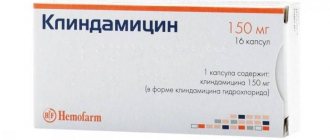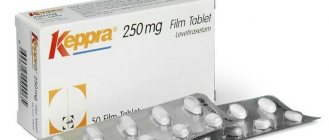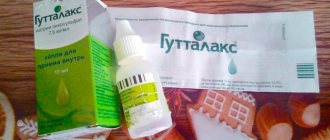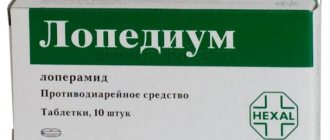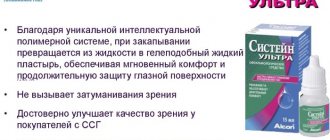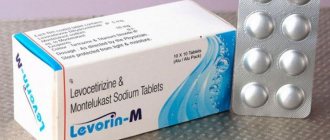Irunin first appeared on pharmacy shelves about 20 years ago and since then has been considered one of the best antimycotics in the fight against fungal infections. The drug has undergone the necessary clinical studies, which have proven its effectiveness against most pathogens of mycosis. We invite you to find out how Irunin works against nail fungus.
Release form and composition
Dosage forms:
- Capsules: size No. 0, hard gelatin, yellow; the contents of the capsules are spherical pellets of almost white or white color (in blister packs: 6 or 10 pcs., 1 pack in a cardboard pack, 7 pcs. in a cardboard pack, 2 packs in a cardboard pack);
- Vaginal tablets: almost white or white, in the form of a ring (10 pcs. in blister packs, 1 pack in a cardboard pack).
The active ingredient of Irunin is itraconazole:
- 1 capsule – 100 mg;
- 1 vaginal tablet – 200 mg.
Auxiliary components:
- Capsules: methacrylic acid copolymer (eudragit), hypromellose (hydroxypropyl methylcellulose), propyl parahydroxybenzoate (nipazole), sucrose (sugar), methyl parahydroxybenzoate (nipagin), sugar granules (starch molasses, sucrose (sugar));
- Vaginal tablets: potato starch, lactose (milk sugar), povidone (polyvinylpyrrolidone), sodium lauryl sulfate, magnesium stearate, talc.
Additionally, the capsules contain: gelatin, titanium dioxide, yellow iron oxide, methyl parahydroxybenzoate (nipazole), methyl parahydroxybenzoate (nipagin), acetic acid, sunset yellow dye (E110), quinoline yellow dye (E104).
Irunin's analogues
Level 4 ATC code matches:
Medoflucon
Vfend
Itracon
Mikosist
Mikomax
Orungal
Mycoflucan
Fluconazole
Sporagal
Orungamin
Flucostat
Difluzol
Rumicosis
Futsis
Vero-Fluconazole
Kandizol
Kanditral
Itraconazole
Diflazon
Itrazol (capsules), Itraconazole , Itramikol , Canditral (capsules), Orungal (capsules, solution), Orungamin , Rumikoz (capsules), Teknazol , Zalain (suppositories), Vagisept (suppositories), Fluconazole , Livarol (suppositories), Mikosist (capsules) , solution), Nizoral (tablets), Clotrimazole (ointment, cream).
Irunin is a relatively inexpensive drug; analogues are usually more expensive.
Pharmacodynamics and pharmacokinetics
Itraconazole is a triazole derivative that inhibits the synthesis of ergosterol in the cell membrane of fungi.
This substance is active against infections caused by the following microorganisms:
- dermatophytes (Epidermophyton floccosum, Microsporum spp., Trichophyton spp.);
- yeasts and yeast-like fungi (Pityrosporum spp., Cryptococcus neoformans, Candida spp., including C. krusei, C. albicans and C. glabrata);
- Fonsecaea spp., Paracoccidioides brasiliensis, Aspergillus spp., Histoplasma spp., Blastomyces dermatitidis, Sporothrix schenckii, Cladosporium spp.;
- other molds and yeasts.
When taking Irunin orally, the maximum bioavailability of the drug is observed immediately after a heavy meal. Maximum plasma concentrations are observed 3–4 hours after oral administration. The drug is cleared from plasma in two phases, the final half-life is from 1 to 1.5 days. With long-term use, 1–2 weeks are required to achieve equilibrium concentration. The equilibrium concentration of itraconazole in plasma 3–4 hours after taking Irunin is:
- when taking 100 mg once a day – 0.4 mcg/ml;
- when taking 200 mg once a day – 1.1 mcg/ml;
- when taking 200 mg 2 times a day – 2 mcg/ml.
Itraconazole is 99.8% capable of binding to plasma proteins.
The accumulation of Irunin in keratin tissues (especially in the skin) is approximately 4 times higher than the accumulation of the drug in the blood plasma, and the rate of its elimination is directly affected by the regeneration of the epidermis.
Plasma concentrations of itraconazole are undetectable 7 days after completion of treatment, but therapeutic concentrations in the skin remain for 2–4 weeks after completion of a 4-week course of therapy. Itraconazole can be detected in nail keratin within 7 days after the start of treatment and within 6 months after the end of a 3-month course of therapy. This substance is also detected in sebum and sweat (to a lesser extent).
Irunin is well distributed in tissues susceptible to fungal infections. Concentrations in bones, muscles, stomach, liver, spleen, kidneys and lungs were 2–3 times higher than the corresponding plasma concentrations. Therapeutic concentrations in vaginal tissues are determined within 2 days after the end of taking 200 mg of the drug per day, as well as within 3 days after taking 200 mg 2 times a day during a one-day course of therapy.
The antifungal concentrations of the drug determined by the microbiological method are approximately 3 times higher than the concentrations measured using HPLC.
Metabolism of Irunin occurs in the liver and is accompanied by the formation of a large number of metabolites. One such substance is hydroxy-itraconazole, whose antifungal effect is comparable to that of itraconazole. 3–18% of the dose is excreted through the gastrointestinal tract, less than 0.03% through the kidneys. Approximately 35% of the dose is excreted within 7 days in the urine in the form of metabolites.
Comparison of drugs (which is better?)
Irunin or Terbinafine. The active component of Irunin is itraconazole, which has a pronounced antifungal effect. Terbinafine contains the substance of the same name, terbinafine, which is characterized by a complex therapeutic effect - fungicidal and antibacterial. Moreover, both medications boast a wide spectrum of activity against known pathogens of mycoses - dermatophytes, molds and yeast-like fungi.
Unlike Irunin, which is available in capsules, Terbinafine is produced in the form of oral tablets and cream. The complex use of the latter increases its therapeutic effect against nail fungus. Terbinafine therefore benefits from its comprehensive approach.
Irunin or Itraconazole. These products can be called structural substitutes, because they are based on the same active substance. The medication summary has many common standards, but Itraconazole has more contraindications for use. For example, it is strictly prohibited for elderly people.
In addition, Itraconazole is produced only in capsules, while Irunin has another form of release - vaginal tablets, which is very convenient in the fight against thrush in women. Thus, the leader between these medicines is Irunin, but in terms of cost it is about 100–150 rubles more expensive than its rival.
Irunin or Orungamin. Two structural analogues that have much in common with each other. They are based on itraconazole, have the same dosage and are available in capsules. Their cost differs - Orungamin is 2 times more expensive than Irunin. If you want to save money, this factor may be decisive for a potential patient.
Irunin or Rumikoz. Both drugs contain itraconazole in their base. They are available in capsule form and have the same price category. Despite this, Rumicosis is considered more effective against candidiasis and lichen. Otherwise, the medications are similar, so the choice between them is left to the doctor.
Fluconazole or Irunin. Fluconazole contains the substance of the same name - fluconazole. The drug also has a broad spectrum of action against fungal infections, but has much fewer contraindications and is less likely to cause side effects compared to Irunin.
Thus, Fluconazole is well tolerated by the body, so it is preferable to use it for children, pregnant women and the elderly, people with chronic diseases - in all cases where Irunin is contraindicated.
Irunin or Itrazol. The drugs have identical composition, release form, recommendations and restrictions for use. Their only difference is in the price category. The cost of Itrazol is 2 times higher compared to Irunin - it is up to the buyer to decide which product to choose.
Indications for use
Capsules
- Systemic candidiasis and aspergillosis, cryptococcosis (including cryptococcal meningitis), sporotrichosis, histoplasmosis, blastomycosis, paracoccidioidomycosis and other types of systemic mycoses;
- Dermatomycoses;
- Visceral candidiasis;
- Vulvovaginal candidiasis and other candidomycosis infections affecting the mucous membranes and skin;
- Onychomycosis caused by molds, dermatophytes and/or yeasts;
- Fungal keratitis;
- Pityriasis versicolor.
Vaginal tablets
The indication for the use of vaginal tablets is vulvovaginal candidiasis, including the recurrent form.
Analogues and their prices
Irunin has more than 30 substitutes for pharmacological properties and structural composition.
Its expensive analogues include:
Orungal. The active ingredient is itraconazole. Available in capsule form. Indications for use, treatment regimens and contraindications for the drug are identical to Irunin. The cost of 14 capsules of Orungal in Russia is 3200 rubles, in Ukraine - 1200 grams.
Mikosist. The active ingredient is fluconazole. The drug is available in capsule form. Prescribed for the systemic treatment of mycotic infections, including nail fungus. The cost of 7 Mikosist pills will cost the buyer 750 rubles. in Russia and 329 gr. in Ukraine.
Among the cheap substitutes are the following:
Econazole The active ingredient is econazole. Available in the form of solution, spray, gel and vaginal suppositories. The drug is prescribed exclusively topically for the treatment of mycoses caused by dermatophytes, molds and yeast-like fungi. The cost of Econazole in the form of a gel is 100 rubles. in Russia and 33 gr. in Ukraine.
Funit. The active ingredient is itraconazole. Available in capsule form. Prescribed for mycoses of the skin and mucous membranes, nail fungus, candidiasis and lichen. The price for a package of Funit, consisting of 4 capsules, is 250 rubles. in Russia and 104 gr. in Ukraine.
Pimafucin. The active ingredient is natamycin. Available in the form of tablets, cream and suppositories. The drug has a wide spectrum of action and is successfully used in dermatology and gynecology. The cost of 20 tablets of Pimafucin will cost the buyer 460 rubles. or 140 g., cream of the same name - 250 rubles. or 89 gr. per tube of 30 g.
All analogues of Irunin have a pronounced antifungal effect against mycoses. Their use should be agreed with a doctor.
Contraindications
- Breastfeeding period;
- Hypersensitivity to the components of the drug.
During pregnancy, capsules are prescribed in exceptional cases, only if the expected benefit of treatment is much higher than the existing threat to the fetus.
With increased activity of liver enzymes, the acute phase of liver disease, the use of capsules is not advisable, except in cases of justified risk, if the expected benefit of therapy outweighs the threat of liver damage.
Caution must be exercised when prescribing capsules to patients with chronic heart failure (including medical history), heart valve damage, coronary heart disease, renal failure, chronic obstructive pulmonary disease.
Due to the lack of sufficient clinical data on the use of capsules in pediatrics, it is recommended to prescribe the drug to children only if the potential benefits of taking Irunin outweigh the possible risks.
The use of vaginal tablets is contraindicated in the first trimester of pregnancy; in the second and third trimesters, use is possible only if the expected effect of therapy for the woman exceeds the potential risk to the fetus.
Irunin price, where to buy
The price of Irunin in vaginal tablets No. 10 in Russia is 280-315 rubles. The price of Irunin candles in Ukraine reaches 400 hryvnia for package No. 10.
The price of Irunin for nail fungus (capsule No. 14) in Russia ranges from 650-750 rubles. Buying capsules in this form of release reaches 735 hryvnia.
- Online pharmacies in RussiaRussia
ZdravCity
- Irunin capsules 100 mg 14 pcs. JSC Veropharm
933 rub. order - Irunin tablets vaginal. 200 mg 10 pcs. JSC Veropharm
RUR 459 order
Instructions for use of Irunin: method and dosage
Capsules
The capsules are taken orally, swallowed whole, immediately after meals.
The dose of the drug and the period of treatment are prescribed by the doctor based on clinical indications and concomitant pathologies.
Recommended dosage:
- Vulvovaginal candidiasis: 200 mg 2 times a day for 1 day or the same dose 1 time a day for 3 days;
- Pityriasis versicolor: 200 mg once a day for 7 days;
- Dermatomycosis of smooth skin: 200 mg 1 time per day, duration of treatment – 7 days or 100 mg 1 time per day – 15 days;
- Fungal keratitis: 200 mg once a day, course of treatment – 21 days; for lesions of the hands and feet, additional capsules are required at a dose of 100 mg per day for 15 days;
- Oral candidiasis: 100 mg 1 time per day for 15 days;
- Candidiasis: 100-200 mg 1 time per day (for disseminated or invasive form - 200 mg 2 times per day) with a duration of administration from 21 days to 7 months;
- Aspergillosis: 200 mg 1 time per day (for invasive or disseminated form - at the same dose 2 times per day), course of treatment from 60 days to 5 months;
- Cryptococcosis (without meningitis): 200 mg 1 time per day, course of administration from 60 days to 12 months;
- Cryptococcal meningitis: 200 mg 2 times a day, maintenance therapy – 200 mg 1 time a day, duration of treatment from 60 days to 12 months;
- Chromomycosis: 100-200 mg 1 time per day for 6 months;
- Sporotrichosis: 100 mg 1 time per day for 3 months;
- Histoplasmosis: 200 mg 1-2 times a day, course of therapy – 8 months;
- Paracoccidioidomycosis: 100 mg 1 time per day for 6 months;
- Blastomycosis: 100-200 mg 1-2 times a day, treatment period – 6 months.
When prescribing capsules to patients with organ transplants, neutropenia, AIDS and other immune disorders, the dose is increased by 2 times.
For onychomycosis, two types of therapy can be used:
- Continuous treatment for 3 months with 200 mg of Irunin once a day;
- Take the drug for 7 days, 200 mg 2 times a day, followed by a break of 21 days. For fungal infections of the nail plates of the hands, 2 courses are required, and for the feet - 3 courses.
The optimal mycological and clinical effect of therapy occurs after discontinuation of the drug after 14-30 days for skin infections and 6-9 months for nail infections.
Vaginal tablets
Irunin vaginal tablets are used intravaginally, inserted into the vagina while lying on your back with your knees bent. The procedure is carried out in the evening before bedtime.
Dosage regimen: 1 tablet 1 time per day for 7-14 days.
A repeat course is possible after agreement with the attending physician.
Reviews from doctors and patients
On the Internet you can find many positive opinions about Irunin. According to statistics, an antimycotic helps in 98% of cases to cope with nail fungus, regardless of the severity of the pathological process. We invite you to find out what specific people—doctors and patients—say about the drug.
Kavetsky M. Yu., dermatologist. “Onychomycosis is a common infection that every third person in the world encounters at least once in their life. Currently, there are a large number of drugs that can cure this disease, but only a few of them do it once and for all. I prescribe Irunin capsules to my patients. This medicine copes with its task perfectly and has many positive reviews among them.”
Darina, 24 years old. “The fungus affected my fingernails. The problem turned out to be old and the doctor prescribed Irunin capsules for 2 courses of 7 days. After treatment, the disease went away and no relapses appeared within a year. I recommend that Irunin should help.”
Irina, 27 years old. “I treated nail fungus for a long time using improvised and pharmacy methods without the participation of a specialist, until my patience ran out. When I went to the doctor, the situation turned out to be more than advanced. I was prescribed treatment of the plates with Mycospor and three courses of Irunin capsules. It was not difficult to take the drug orally in the form of short regimens; the only thing I wanted to pay attention to was the side effects in the form of nausea and weakness. After 4 months, the condition of the nails has improved significantly. The doctor explained that the final result would be obvious in another six months. I recommend".
Irunin, like most antimycotics, has a wide spectrum of activity and is highly effective against nail fungus. But, unfortunately, not everyone is allowed to take the drug - it has many contraindications and side effects that should be discussed with a doctor. Therefore, Irunin cannot be used for self-medication.
Side effects
Capsules
- Nervous system: possible – fatigue, headache, peripheral neuropathy, dizziness;
- Digestive system: often – nausea, dyspepsia, constipation, abdominal pain; possible – anorexia, increased activity of liver enzymes (reversible), hepatitis, cholestatic jaundice; in some cases - toxic liver damage, including a case of acute liver failure with a fatal outcome;
- Reproductive system: possible – menstrual irregularities;
- Cardiovascular system: possible – pulmonary edema, chronic heart failure;
- Urinary system: hypercreatininemia, dark colored urine;
- Metabolism: hyperkalemia, edema;
- Dermatological reactions: possible – alopecia;
- Allergic reactions: possible - skin itching, rash, angioedema, urticaria, Stevens-Johnson syndrome.
Vaginal tablets
When using vaginal tablets, local reactions may rarely occur: burning sensation in the vagina, itching, skin rash in the external genital area (drug discontinuation is not required).
Irunin
Active substance:
Itraconazole*
Pharmgroup:
Antifungal agents
Average price in pharmacies
| Name | Manufacturer | average price |
| Irunin 0.1 n14 caps | VEROPHARM | 765.00 |
| Irunin 0.1 n6 caps | VEROPHARM | 395.00 |
| Irunin 0.2 n10 tab vag | VEROPHARM | 381.00 |
Analogs for the active substance:Itrazole Itraconazole Itraconazole-ratiopharm Itramikol Kanditral Miconihol Orungal Orungamin Orunite Rumicosis Tecnazole | Application area:Gilchrist's disease Vaginal candidiasis Dory's disease Vaginal candidiasis Rose Lovers Disease Schenck-Berman disease Visceral candidiasis Visceral mycosis Vulval candidiasis Vulvovaginal candidiasis Vulvovaginal candidiasis Vulvovaginitis candidiasis Vulvovaginitis mycotic Deep endemic mycoses Fungal infection Fungal vaginitis Fungal skin infections Fungal skin lesions Fungal infections of skin folds Fungal infections of the bronchial mucosa Fungal infections of the oral mucosa European blastomycosis Invasive aspergillosis Invasive candidiasis Fungal infections Fungal skin infections Vaginal candidiasis Candidiasis of internal organs Laryngeal candidiasis Candidiasis of the gastrointestinal tract Candidiasis of the skin and mucous membranes Genitourinary candidiasis Candidiasis of the genitourinary organs in women Candidiasis with damage to the skin and mucous membranes Candidiasis of mucous membranes and skin Candidiasis of the mucous membranes Candidiasis of the mucous membranes Candidiasis of mucous membranes and skin Candidiasis due to Candida albicans Candidal vaginitis Candidiasis vulvitis Vulvovaginal candidiasis Candidomycosis Keratomycosis Cutaneous mycosis Colpitis of fungal etiology Cryptococcal meningitis Cryptococcal meningitis Pulmonary mycosis Pityriasis versicolor Pityriasis furfuracea (pityriasis furfuracea) Ringworm multicolored Cryptococcal meningitis Mycosis Mycoses of the eyes Mycoses of the gastrointestinal tract Skin mycoses Mycoses of large skin folds Systemic mycoses Mycoses of mucous membranes Mycoses with secondary bacterial infection Mycoses in patients with immunodeficiency Vaginal thrush Moniliasis vulvovaginitis Acute vaginal candidiasis Acute mycosis of the vagina Acute pseudomembranous candidiasis Pityriasis versicolor Paracoccidioidosis Superficial candidiasis of the genital mucosa Tinea versicolor Common mycoses Recurrent vaginal candidiasis Recurrent vaginal candidiasis Rhinocladiasis North American blastomycosis Systemic mycoses Systemic aspergillosis Tropical mycoses Urogenital candidiasis Chronic forms of candidiasis Chronic vaginal candidiasis Chronic candidiasis of the mucous membranes Chronic recurrent vaginal candidiasis South American blastomycosis South American blastomycosis Cryptococcus Pitirosporum orbiculare |
Overdose
In case of an overdose of capsules, it is possible to develop effects comparable to dose-dependent adverse events when using normal doses of the drug. There is no specific antidote, so in case of overdose, it is necessary to rinse the stomach with soda solution for 1 hour and start taking enterosorbents. During hemodialysis, itraconazole is not excreted.
Exceeding recommended doses when using vaginal tablets does not usually cause harmful reactions. If you accidentally take tablets orally, you must rinse your stomach and start taking enterosorbents.
Reviews: “On the third day, the spots on the skin almost disappeared”
I, too, was cured with Irunin according to the pulse therapy scheme (it’s in the instructions), I dripped exoderil onto the cleaned nail and some other antifungal ointment... The nail slowly grew back healthy... otherwise the fungus was so deep that even the sensitivity on the thumb disappeared...
Guest , https://www.woman.ru/health/medley7/thread/3943641/2/
For 2 years I struggled with versicolor versicolor with occasional success. The talkers only helped for a while. On this basis, she lived to the point of neurosis. The latest conclusion from a dermatologist is seborrheic dermatitis, weeping. I started taking Irunin in combination with vitamins, sedatives and linden tea. On the third day, almost all of the spots on the skin disappeared (even the tightness of the skin disappeared), the itching and dandruff still remained, but there was hope for healing... I hope for positive results, but for now I continue the treatment...
Olga , https://www.tiensmed.ru/news/irunin-a2h.html
I treated my fingernails affected by fungus in various ways for about 5 years. On the recommendation of a doctor, I tried Irunin. After 2 courses (14 tablets each), the nails were completely clear. The industries are new and there have been no problems for 5 years. I read about the side effects in the instructions, but nothing happened.
Yuri , https://www.tiensmed.ru/news/irunin-a2h.html
When I was examined by a gynecologist, she prescribed me Irunin for candidiasis. I took Irunin two capsules 2 times a day after breakfast and dinner. I was treated for 3 days in total. During the course, the symptoms practically disappeared. But literally three days after the end of treatment they began to resume. I didn’t have a sexual partner then, so the option of infection was out of the question. It turns out that I just threw money away. Later I read that it still has a long list of side effects, but, fortunately, they did not appear for me. I will not say that the drug is completely useless, but for me personally it turned out to be exactly that.
Lora , https://doctorsforum.ru/viewtopic.php?f=32&t=427
Three years ago, my eldest son was diagnosed with patches of multicolored lichen. For a whole month they tried to cure him with various gels and ointments. Finally, we were examined by a dermatologist, and he recommended antifungal tablets to choose from. I decided to buy Irunin, because it was the most inexpensive (only 300 rubles - packaging). In comparison with Orungal, which costs 2000 rubles, this is pennies. I gave my son two capsules after breakfast for three days, as recommended in the instructions. My son tolerated the drug well; there were no side effects, at least no visible ones. On the third day, the lichen began to go away, and after 10 days only a trace remained.
Spring , https://doctorsforum.ru/viewtopic.php?f=32&t=427
special instructions
The administration of capsules to patients with chronic heart failure is indicated in exceptional cases, since Irunin has a negative inotropic effect.
For patients with low stomach acidity who are on concurrent therapy with antacid drugs, it is recommended to take them 2 hours after taking the capsules. It is necessary to wash down capsules with cola when combined with proton pump inhibitors or histamine H2 receptor blockers in patients with achlorhydria.
Women of childbearing age should use reliable methods of contraception during the period of taking capsules until the onset of the first menstrual bleeding after completion of therapy.
The drug should be used with caution in patients with liver disease or on treatment with drugs that have a hepatotoxic effect. Their treatment is recommended to be accompanied by regular monitoring of liver function and careful medical supervision. If symptoms of hepatitis develop (weakness, abdominal pain, dark urine, nausea, vomiting, anorexia), immediate discontinuation of itraconazole and liver function tests are required. In case of liver disease in the active phase or elevated levels of liver enzymes, it is advisable not to prescribe Irunin.
If signs of neuropathy appear, further use of the capsules should be discontinued.
Itraconazole should be used with caution if there is a history of azole hypersensitivity.
To avoid reinfection, the use of vaginal tablets in a woman must be carried out while simultaneously treating the sexual partner and observing hygiene rules.
Sexual intercourse is contraindicated during treatment with vaginal tablets.
If there is no clinical effect and there are signs of infection after completion of therapy, a repeat microbiological study is required to confirm the diagnosis.
If an allergic reaction develops, the administration of the tablets should be stopped; if immediate removal of the drug is necessary, the vagina can be washed with boiled water.
The effect of the drug does not affect the patient’s ability to drive vehicles and machinery.
Nail fungus in adults
Fungal diseases in humans today occupy a special place in general infectious pathology. The most widespread among all fungal infections in humans is onychomycosis - nail fungus. According to many studies conducted in various countries, it has been determined that over 30% of the world's population is infected with various fungal diseases, and among all types of mycoses, nail fungus accounts for more than 50% of them. This fungal infection is the most difficult to treat, since therapy for nail mycoses must be long-term, complex, with parallel regular antiseptic treatment of the patient’s shoes. Most often, the causative agents of onychomycosis are dermatophytes - they are found in 50-80% of patients with nail fungus, yeast-like fungi - 5-7%, mold fungi - 9%.
Often, several pathogens of nail fungus are simultaneously diagnosed in patients, that is, laboratory research methods determine mixed mycoses, which are difficult to respond to local therapy. Therefore, in many clinical cases, successful treatment of onychomycosis is impossible without the use of broad-spectrum oral antimycotics.
Use during pregnancy and lactation
In experimental studies, it was found that itraconazole has an embryotoxic effect and can cause fetal developmental abnormalities.
During pregnancy, it is permissible to use Irunin only for systemic mycoses and only in situations where the benefit to the mother outweighs the risk to the child.
During treatment with the drug, women of childbearing age should use reliable contraception.
When prescribing Irunin during lactation, breastfeeding must be interrupted.
Advantages and disadvantages of the drug
Irunin capsules and tablets for fungus have certain pros and cons. Among the positive points it should be noted:
- high efficiency in the fight against onychomycosis at any stage;
- speed and ease of use;
- ability to replace other medications that are not suitable for patients;
- the ability to be used to treat animals.
However, this medicine also has certain disadvantages. The main disadvantages of this tool include the fact that it:
- expensive;
- has many contraindications;
- toxic.
In addition, the drug cannot be used during pregnancy and breastfeeding, and there is also a possibility of developing side effects.
Use for liver dysfunction
According to the instructions, Irunin should not be prescribed to patients with liver diseases, however, in case of emergency with liver cirrhosis, the drug is used under the control of its plasma content and with appropriate dose adjustment.
With increased activity of liver transaminases, Irunin is used only in cases where the possible benefit outweighs the potential risk of liver damage.
When taking itraconazole for more than 1 month, it is necessary to monitor liver function.
If symptoms of liver dysfunction develop, treatment with itraconazole is discontinued.
The effectiveness of treating nail fungus with Irunin
After a thorough examination of the patient, biochemical tests, cultural research methods, consultations with other specialists to determine concomitant diseases, a dermatologist may prescribe a modern antimycotic for oral administration - Irunin, as well as its analogues Orungal, Itrazol, Orunit, Canditral, Rumikoz.
This is a relatively new drug, the international nonproprietary name of which is Itraconazole, a synthetic antifungal antibiotic that has been widely used in our country since 1996. Many studies have repeatedly confirmed its highly effective effect in the treatment of various fungal diseases not only of nails, but also of the skin, internal organs, and vaginal candidiasis. The safety of Irunin in the treatment of various mycoses in people suffering from diabetes has also been confirmed.
According to studies, after 9 months of treatment with Itraconazole, during control diagnostics, 92% of patients with onychomycosis showed complete recovery, and during control examination one year after therapy, 94% also showed complete recovery. In addition to treatment with oral antifungals, local therapy of the affected areas should be simultaneously carried out, and regular disinfection of shoes used by a patient with toenail fungus should be carried out. Without complex therapy and antiseptic measures for shoes, the use of oral antimycotics may not be as effective and may lead to relapses of the disease over time.
Drug interactions
Ittaconazole cannot be prescribed in combination with drugs, metabolizing CYP3A4 isoenzyme, terphenadin, mizolastine, astemaizol, cizapride, midazolam (orally), triazolam, prefhylide, pimoside, quinidine, GMG-koa-reducing inhibitors (lovastatin, Syssumino)-Irunino-Iruninin)-Iruninin) Call prolongation or enhancing their action and side effects. The level of itraconazole in the blood plasma after discontinuation decreases gradually, depending on the duration of treatment and dose.
The combination of itraconazole with calcium channel blockers leads to an increase in its negative inotropic effect and a decrease in the metabolism of calcium channel blockers.
The effectiveness of capsules is reduced by simultaneous administration of rifabutin, rifampicin, phenytoin, which are strong inducers of microsomal liver enzymes and significantly reduce the bioavailability of itraconazole. A similar effect can be assumed when combined with phenobarbital, carbamazepine, isoniazid and other inducers of liver enzymes.
The bioavailability of the drug may increase when combined with ritonavir, indinavir, erythromycin, clarithromycin and other inhibitors of the CYP3A4 isoenzyme of the cytochrome P450 system.
With the simultaneous use of HIV protease inhibitors (indinavir, ritonavir, saquinavir), oral anticoagulants, some anticancer drugs (busulfan, rose vinca alkaloids, trimetrexate, docetaxel), some immunosuppressants (tacrolimus, cyclosporine, sirolimus), metabolized with the participation of the CYP3A4 isoenzyme, calcium blockers channels (verapamil, dihydropyridine), carbamazepine, digoxin, buspirone, alprazolam, alfentanil, brotizolam, methylprednisolone, rifabutin, reboxetine, ebastine require regular monitoring of their concentrations in the blood plasma. If it is necessary to combine them with itraconazole, the dose of these drugs should be reduced.
No interaction was detected with fluvastatin and zidovudine, and no effect of the capsules on the metabolism of norethisterone and ethinyl estradiol was noted.
Studies have confirmed the absence of interaction of Irunin with propranolol, imipramine, diazepam, indomethacin, cimetidine, sulfamethazine, tolbutamide, when bound to plasma proteins.
Drug interactions with itraconazole in the form of vaginal tablets when used in combination with other drugs have not been established.
Instructions:
Clinical and pharmacological group
09.001 (Antifungal drug)
Release form, composition and packaging
The capsules are yellow in color, the contents of the capsules are spherical microgranules from light yellow to yellowish-beige.
| 1 caps. | |
| itraconazole | 100 mg |
Excipients: sucrose, starch, hydroxypropyl methylcellulose, poloxamer.
6 pcs. — contour cell packaging (1) — cardboard packs. 10 pcs. — contour cell packaging (1) — cardboard packs. 14 pcs. — cellular contour packages (1) — cardboard packs.
pharmachologic effect
Broad-spectrum antifungal drug, triazole derivative. Inhibits the synthesis of ergosterol in the cell membrane of fungi. Active against dermatophytes (Trichophyton spp., Microsporum spp., Epidermophyton floccosum), yeast fungi Candida spp. (including Candida albicans, Candida glabrata, Candida krusei), molds (Cryptococcus neoformans, Aspergillus spp., Histoplasma spp., Paracoccidioides brasiliensis, Sporothrix schenckii, Fonsecaea spp., Cladosporium spp., Blastomyces dermatidis).
Pharmacokinetics
Suction
After oral administration, maximum bioavailability is observed when taking capsules immediately after a heavy meal.
Cmax is reached after 3-4 hours.
Distribution
The time to reach Css with long-term use is 1-2 weeks. Css 3-4 hours after taking the drug at a dose of 100 mg 1 time/day is 0.4 mcg/ml; 200 mg 1 time/day – 1.1 mcg/ml, 200 mg 2 times/day – 2 mcg/ml.
Plasma protein binding is 99.8%.
The concentration of the drug in tissues containing keratin, especially in the skin, is approximately 4 times higher than the concentration in the blood plasma, and its elimination depends on the regeneration of the epidermis.
Unlike plasma concentrations, which are undetectable 7 days after discontinuation of the drug, therapeutic skin concentrations persist for 2-4 weeks after discontinuation of the 4-week course of treatment. Itraconazole is detectable in nail keratin as early as 1 week after initiation of treatment and persists for at least 6 months after completion of the 3-month course of treatment. Itraconazole is also detected in the secretions of the sebaceous and sweat glands.
Itraconazole is well distributed in tissues that are susceptible to fungal diseases. Concentrations in the lungs, kidneys, liver, bones, stomach, spleen, and muscles were 2-3 times higher than the corresponding concentrations in blood plasma.
Therapeutic concentrations in vaginal tissues remain for another 2 days after the end of a 3-day course of treatment at a dose of 200 mg/day and 3 days after the end of a 1-day course of treatment at a dose of 200 mg 2 times/day.
Metabolism
Itraconazole is metabolized in the liver to form a large number of metabolites. One such metabolite is hydroxyitraconazole, which has comparable antifungal activity to itraconazole in vitro.
Removal
Removal from plasma is biphasic, T1/2 is 1-1.5 days.
Excretion with feces is 3-18%, excretion by the kidneys is less than 0.03%. Approximately 35% is excreted as metabolites in the urine within 1 week.
Pharmacokinetics in special clinical situations
In patients with liver cirrhosis, T1/2 increases slightly, and the bioavailability of the drug decreases (dose adjustment may be required).
In patients with renal failure, the bioavailability of itraconazole may also be reduced (dose adjustment required).
Antifungal concentrations of the drug determined by the microbiological method were approximately 3 times higher than the concentrations determined by HPLC.
Dosage
For optimal absorption of the drug, it is necessary to take Irunin capsules immediately after meals.
Capsules should be swallowed whole.
Table 1.
| Indication | Dose | Duration of treatment |
| Vulvovaginal candidiasis | 200 mg 2 times/day | 1 day |
| 200 mg 1 time/day | 3 days | |
| Pityriasis versicolor | 200 mg 1 time/day | 7 days |
| Dermatomycosis of smooth skin | 200 mg 1 time/day | 7 days |
| 100 mg 1 time/day | 15 days | |
| Fungal keratitis | 200 mg 1 time/day | 21 day |
| Lesions of highly keratinized areas, such as the hands and feet, require additional treatment for 15 days at a dose of 100 mg/day | ||
| Oral candidiasis | 100 mg 1 time/day | 15 days |
| The oral bioavailability of itraconazole may be reduced in some immunocompromised patients, such as neutropenic patients, patients with AIDS, or organ transplant recipients. Therefore, a doubling of the dose may be required. | ||
For onychomycosis, pulse therapy is indicated (see Table 2). One course of pulse therapy consists of daily intake of Irunin 200 mg (2 capsules) 2 times a day for 1 week.
For the treatment of fungal infections of the nail plates of the hands, 2 courses are recommended.
For the treatment of fungal infections of the nail plates of the feet, 3 courses are recommended. The interval between courses is 3 weeks.
Clinical results appear after the end of treatment, as the nails grow back.
Table 2.
| Localization of onychomycosis | 1st week | 2-4 weeks | 5th week | 6-8 weeks | 9th week |
| Involvement of the nail plates of the feet with or without involvement of the nail plates of the hands | 1st year | interval between courses | 2nd year | interval between courses | 3rd year |
| Damage to only the nail plates of the hands | 1st year | interval between courses | 2nd year | — | — |
For onychomycosis, continuous therapy can be used: 200 mg (2 capsules) 1 time/day for 3 months.
The elimination of itraconazole from the skin and nail plate is slower than from plasma. Thus, optimal clinical and mycological effects are achieved after 2-4 weeks. after completion of treatment for skin infections and 6-9 months after completion of treatment for nail infections.
For systemic mycoses, recommended doses vary depending on the type of infection.
Table 3.
| Indication | Dose | Average duration | Notes |
| Aspergillosis | 200 mg 1 time/day | 2-5 months | Increase dose to 200 mg 2 times / day in case of invasive or disseminated forms |
| Candidiasis | 100-200 mg 1 time/day | from 3 weeks up to 7 months | |
| Cryptococcosis (except meningitis) | 200 mg 1 time/day | from 2 months to 1 year | Maintenance therapy (cases of meningitis) 200 mg 1 time / day |
| Cryptococcal meningitis | 200 mg 2 times/day | ||
| Histoplasmosis | from 200 mg 1 time/day to 200 mg 2 times/day | 8 months | — |
| Sporotrichosis | 100 mg 1 time/day | 3 months | — |
| Paracoccidioidomycosis | 100 mg 1 time/day | 6 months | — |
| Chromomycosis | 100-200 mg 1 time/day | 6 months | — |
| Blastomycosis | from 100 mg 1 time/day to 200 mg 2 times/day | 6 months | — |
Overdose
There is no data on drug overdose.
Treatment: in case of accidental overdose, gastric lavage should be done within the first hour after taking the drug, and, if necessary, activated charcoal should be prescribed.
Symptomatic and supportive therapy is indicated.
Itraconazole is not eliminated by hemodialysis. A specific antidote is not known.
Drug interactions
Concomitant use with rifampicin, rifabutin and phenytoin, which are strong inducers of microsomal liver enzymes, is not recommended, because these drugs may significantly reduce the bioavailability of itraconazole and hydroxyitraconazole, resulting in a significant reduction in the effectiveness of the drug. Studies on the interaction of itraconazole with other hepatic enzyme inducers, such as carbamazepine, phenobarbital and isoniazid, have not been conducted, but a similar effect can be expected.
Because itraconazole is primarily metabolized by the CYP3A4 isoenzyme of the cytochrome P450 system; strong inhibitors of this enzyme (including ritonavir, indinavir, clarithromycin and erythromycin) may increase the bioavailability of itraconazole.
Itraconazole may inhibit the metabolism of drugs that are biotransformed with the participation of the CYP3A4 isoenzyme. The result of this may be an intensification or prolongation of their action, incl. and side effects. After discontinuation of treatment, itraconazole plasma concentrations decrease gradually, depending on the dose and duration of treatment.
Terfenadine, astemizole, mizolastine, cisapride, triazolam, midazolam (orally), dofetilide, quinidine, pimozide, metabolized by the CYP3A4 isoenzyme, HMG-CoA reductase inhibitors (simvastatin and lovastatin) should not be prescribed concomitantly with itraconazole.
Calcium channel blockers have a negative inotropic effect that may enhance this effect of itraconazole; itraconazole may decrease the metabolism of calcium channel blockers. Caution should be used when itraconazole is used concomitantly with calcium channel blockers.
Drugs that require monitoring of plasma concentrations: oral anticoagulants; HIV protease inhibitors (ritonavir, indinavir, saquinavir); some antitumor drugs (vinca rosea alkaloids, busulfan, docetaxel, trimetrexate); calcium channel blockers metabolized with the participation of the CYP3A4 isoenzyme (dihydropyridine and verapamil); some immunosuppressants (cyclosporine, tacrolimus, sirolimus); other drugs - digoxin, carbamazepine, buspirone, alfentanil, alprazolam, brotizolam, rifabutin, methylprednisolone, ebastine, reboxetine. When used concomitantly with itraconazole, if necessary, the dose of these drugs should be reduced.
No interaction was found between itraconazole and zidovudine and fluvastatin.
There was no effect of itraconazole on the metabolism of ethinyl estradiol and norethisterone.
In vitro studies have demonstrated that there is no interaction between itraconazole and drugs such as imipramine, propranolol, diazepam, cimetidine, indomethacin, tolbutamide and sulfamethazine when bound to plasma proteins.
Use during pregnancy and lactation
During pregnancy, Irunin is prescribed only in cases of extreme necessity, when the expected benefit of therapy for the mother exceeds the existing risk to the fetus.
Itraconazole is excreted in small quantities into breast milk. If it is necessary to prescribe Irunin during lactation, the expected benefits of therapy for the mother and the potential risk for the infant should be carefully assessed. If in doubt, the issue of stopping breastfeeding should be decided.
Women of childbearing age during the period of use of Irunin should use reliable methods of contraception throughout the course of treatment until the onset of the first menstruation after its completion.
Side effects
From the digestive system: often - dyspepsia, nausea, abdominal pain, constipation; possible anorexia, reversible increase in liver enzyme activity, cholestatic jaundice, hepatitis; in some cases - toxic liver damage, incl. a case of acute liver failure with a fatal outcome.
From the central nervous system and peripheral nervous system: possible headache, fatigue, dizziness, peripheral neuropathy.
From the reproductive system: menstrual irregularities are possible.
From the urinary system: hypercreatininemia, dark colored urine.
Metabolism: edema, hyperkalemia.
From the cardiovascular system: chronic heart failure and pulmonary edema are possible.
Allergic reactions: possible itching, rash, urticaria, angioedema, Stevens-Johnson syndrome.
Dermatological reactions: alopecia is possible.
Storage conditions and periods
List B. The drug should be stored in a dry place, protected from light, at a temperature not exceeding 25°C. Shelf life: 2 years.
Indications
- dermatomycosis;
— onychomycosis caused by dermatophytes and/or yeasts and molds;
— candidomycosis with damage to the skin and mucous membranes, incl. vulvovaginal candidiasis;
- pityriasis versicolor;
- systemic mycoses, including systemic aspergillosis and candidiasis, cryptococcosis (including cryptococcal meningitis), histoplasmosis, sporotrichosis, paracoccidioidomycosis, blastomycosis;
- visceral candidiasis;
- fungal keratitis.
Contraindications
- hypersensitivity to the components of the drug.
special instructions
Itraconazole has a negative inotropic effect. Considering this, Irunin should not be prescribed to patients with chronic heart failure (including a history) unless the expected benefit of therapy significantly outweighs the potential risk. In this case, factors such as the severity of the indications, dosage regimen and individual risk factors for the development of chronic heart failure (including the presence of coronary artery disease, heart valve damage, COPD, renal failure) should be taken into account.
With reduced gastric acidity, the absorption of itraconazole is impaired. Patients receiving antacid drugs (for example, aluminum hydroxide) are recommended to take them no earlier than 2 hours after taking Irunin. Patients with achlorhydria or using histamine H2 receptor blockers or proton pump inhibitors are recommended to take Irunin capsules with cola.
In very rare cases, when using itraconazole, severe toxic liver damage developed, incl. cases of acute liver failure with fatal outcome. In most cases, this was observed in patients who already had liver disease, as well as in patients receiving other drugs that have hepatotoxic effects. In this regard, it is recommended to regularly monitor liver function in patients receiving itraconazole therapy.
In the event of symptoms suggesting the development of hepatitis, incl. anorexia, nausea, vomiting, weakness, abdominal pain and dark urine, you must immediately stop taking the drug and conduct a liver function test. Patients with elevated liver enzyme levels or active liver disease should not be treated with Irunin unless the expected benefit justifies the risk of liver damage. In these cases, it is necessary to monitor the level of liver enzymes during treatment.
If neuropathy develops, which may be caused by oral itraconazole, treatment should be discontinued.
There is no evidence of cross-hypersensitivity to itraconazole and other azole-derived antifungals. Irunin capsules should be administered with caution to patients with hypersensitivity to other azoles.
Use in pediatrics
Since there is insufficient clinical data on the use of Irunin capsules in children, it is recommended to prescribe the drug to children only if the expected benefit of therapy outweighs the potential risk.
Impact on the ability to drive vehicles and operate machinery
The drug does not affect the ability to drive a car and activities associated with the need for high concentration of attention and speed of psychomotor reactions.
Use for liver dysfunction
Patients with elevated liver enzyme levels or active liver disease should not be treated with Irunin unless the expected benefit justifies the risk of liver damage. In these cases, it is necessary to monitor the level of liver enzymes during treatment.
In very rare cases, when using itraconazole, severe toxic liver damage developed, incl. cases of acute liver failure with fatal outcome. In most cases, this was observed in patients who already had liver disease, as well as in patients receiving other drugs that have hepatotoxic effects. In this regard, it is recommended to regularly monitor liver function in patients receiving itraconazole therapy.
In the event of symptoms suggesting the development of hepatitis, incl. anorexia, nausea, vomiting, weakness, abdominal pain and dark urine, you must immediately stop taking the drug and conduct a liver function test.
Conditions for dispensing from pharmacies
The drug is available with a prescription.
